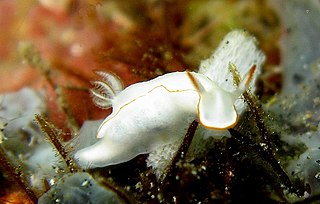Related Research Articles

L'elisir d'amore is a melodramma giocoso in two acts by the Italian composer Gaetano Donizetti. Felice Romani wrote the Italian libretto, after Eugène Scribe's libretto for Daniel Auber's Le philtre (1831). The opera premiered on 12 May 1832 at the Teatro della Canobbiana in Milan.

Mysmenidae is a spider family with about 180 described species in seventeen genera. The family is one of the least well known of the orb-weaving spiders because of their small size and cryptic behaviour. These spiders are found in humid habitats such as among leaf litter and in caves.
Mysmenopsis is a kleptoparasitic genus of tiny tropical and subtropical American spiders in the family Mysmenidae. Most live in the funnelwebs of spiders in the family Dipluridae. M. archeri lives on webs of a species in the family Pholcidae, M. capac and M. cienaga have been observed living in Cyrtophora (Araneidae) webs. One reason why diplurid webs are preferred seems to be that they are persistent in time and space, sometimes spanning several years.
"Una furtiva lagrima" is the romanza from act 2, scene 8 of the Italian opera L'elisir d'amore by Gaetano Donizetti. It is sung by Nemorino (tenor) when it appears that the love potion he bought to win the heart of his dream lady, Adina, is working. He loves Adina, but she is not interested in an innocent, rustic man such as he. To win her heart, he buys a love potion with all the money he has in his pocket. It is actually a cheap red wine sold by a traveling quack doctor—but when he sees Adina weeping, he assumes the "elixir" has worked and she has fallen in love with him.
In Roman Civil Law, a Condictio referred to an "action" or "summons"; hence, compounds in legal Latin refer to various types of actions:

Thorunna furtiva is a species of sea slug, a dorid nudibranch, a shell-less marine gastropod mollusk in the family Chromodorididae. It is the type species of the genus Thorunna.
Asthenotricha furtiva is a moth in the family Geometridae. It is found in Madagascar.

Sybra is a genus of beetles in the family Cerambycidae, containing the following species:
Sybra biguttula is a species of beetle in the family Cerambycidae. It was described by Breuning in 1964. It contains two subspecies, Sybra biguttula biguttula and Sybra biguttula samarensis.
Sybra iconica is a species of beetle in the family Cerambycidae. It was described by Pascoe in 1865. It contains two subspecies, Sybra iconica clarevitticollis and Sybra iconica iconica.

Sybra umbratica is a species of beetle in the family Cerambycidae. It was described by Pascoe in 1865.
Sybra uenoi is a species of beetle in the family Cerambycidae. It was described by Hayashi in 1956. It is known from Japan.
Sybra bioculata is a species of beetle in the family Cerambycidae. It was described by Pic in 1925. It contains four subspecies: Sybra bioculata bioculata, Sybra bioculata quadrinotata, Sybra bioculata sikkimana, and Sybra bioculata tigrina.
Sybra mimogeminata is a species of beetle in the family Cerambycidae. It was described by Breuning and Ohbayashi in 1964. It contains two subspecies, Sybra mimogeminata carinatipennis and Sybra mimogeminata mimogeminata.

Sybra ordinata is a species of beetle in the family Cerambycidae. It was described by Henry Walter Bates in 1873.
Sybra pascoei is a species of beetle in the family Cerambycidae. It was described by Lameere in 1893.
Sybra subfasciata is a species of beetle in the family Cerambycidae. It was described by Henry Walter Bates in 1884.
Cassinia furtiva is a species of flowering plant in the family Asteraceae and is endemic to a restricted area of New South Wales. It is a shrub with hairy, sticky stems, narrow linear leaves and 100 to 150 flower heads arranged in a rounded dichasium.
Orthodes furtiva is a species of cutworm or dart moth in the family Noctuidae. It is found in North America.
Ursia furtiva is a species of moth in the family Notodontidae. It was first described by André Blanchard in 1971 and it is found in North America.
References
- ↑ BioLib.cz - Sybra furtiva. Retrieved on 8 September 2014.